On day 2 of our trip to Inyo County, Hubby and I explored the Owens Valley and followed the Carson & Colorado Railway.

Zurich Station
Known initially as Alford, Zurich was a Carson & Colorado Railroad freight and passenger station beginning in 1884. The station was the first south of Laws and became a transportation hub for locations east of Big Pine, with teamsters hauling passengers and freight the three miles from town. Zurich included a siding station, railroad buildings and an agent’s house.
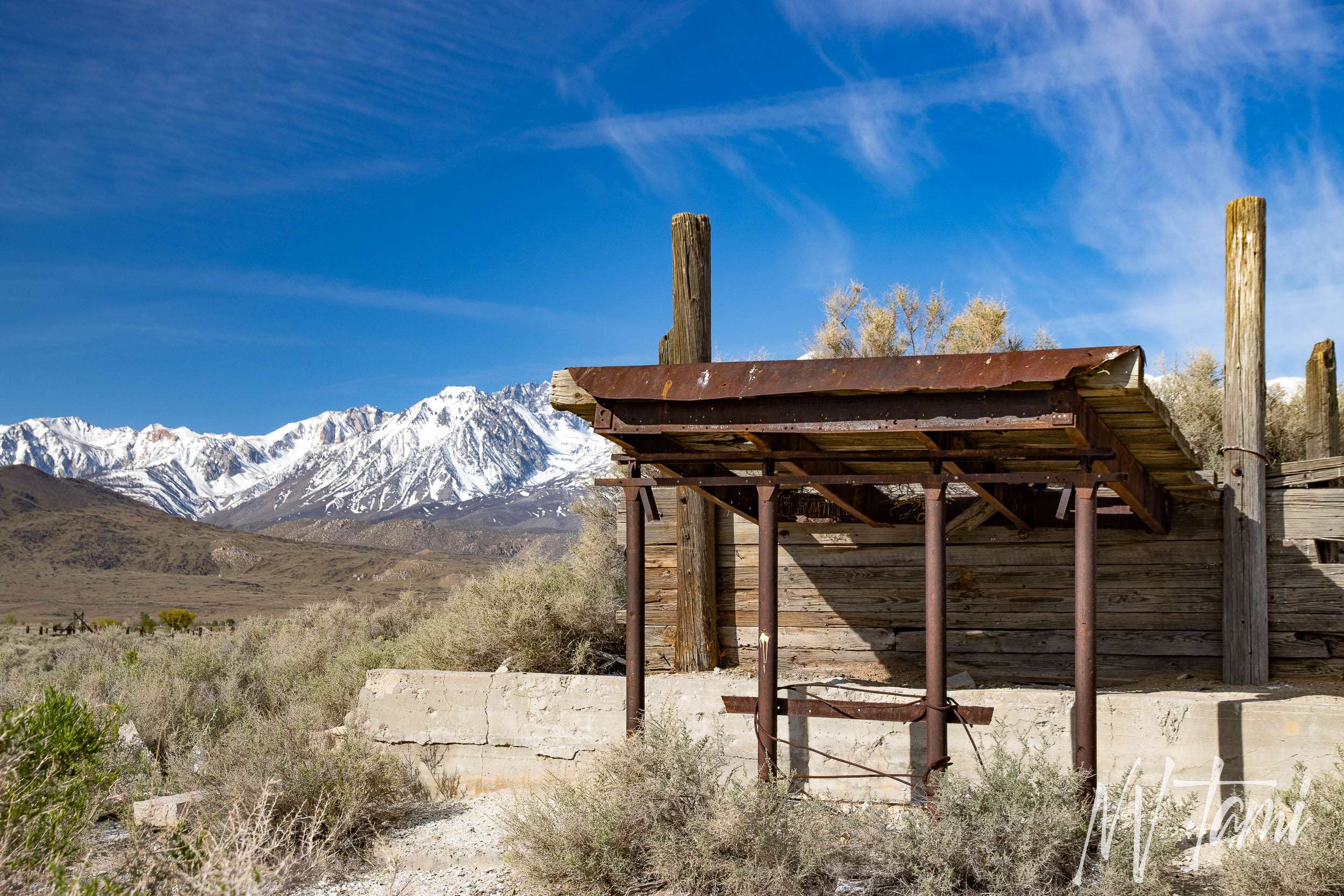
The rail agent’s wife, Emilie Kikolaus, was from Zurich, Switzerland. She fell in love with the snow-covered Sierra and wanted to rename the station in honor of her hometown. Her husband was an intelligent man, and he promptly renamed Alford Zurich Station in 1923.
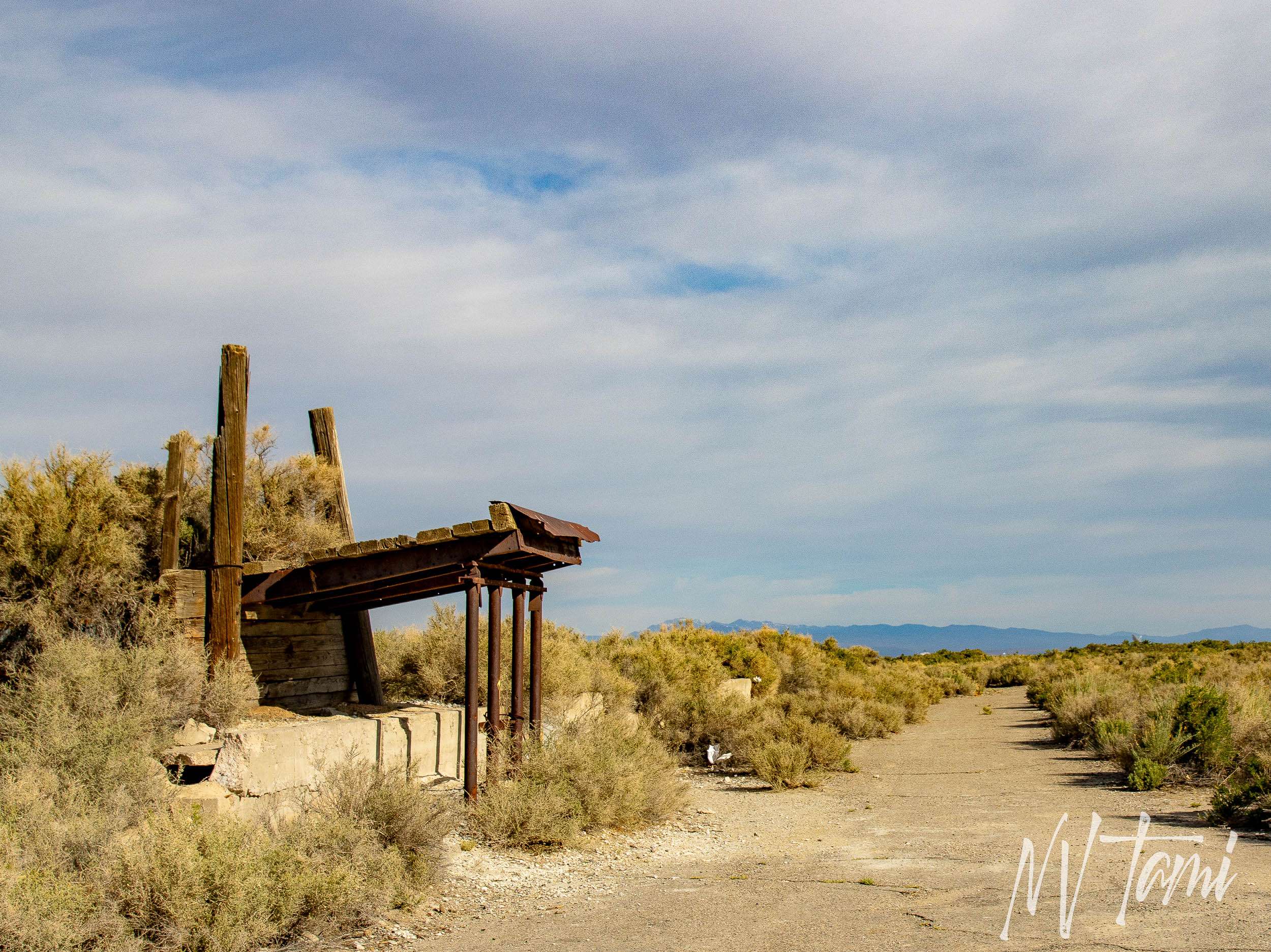
Zurich Station closed in 1960 when the railroad discontinued service.
Kearsarge Station
In 1864, five woodcutters discovered silver and ore. Working on their mining claims, they shipped four tons to a stamp mill in Nevada. Investors formed the Kearsarge Mining Company and Kearsarge City soon had over 1,000 residents. Kearsarge City hoped to become the county seat of Inyo in the next elections but lost to Independence. In 1866, an avalanche destroyed much of Kearsage, killing the foreman’s wife and injuring others.
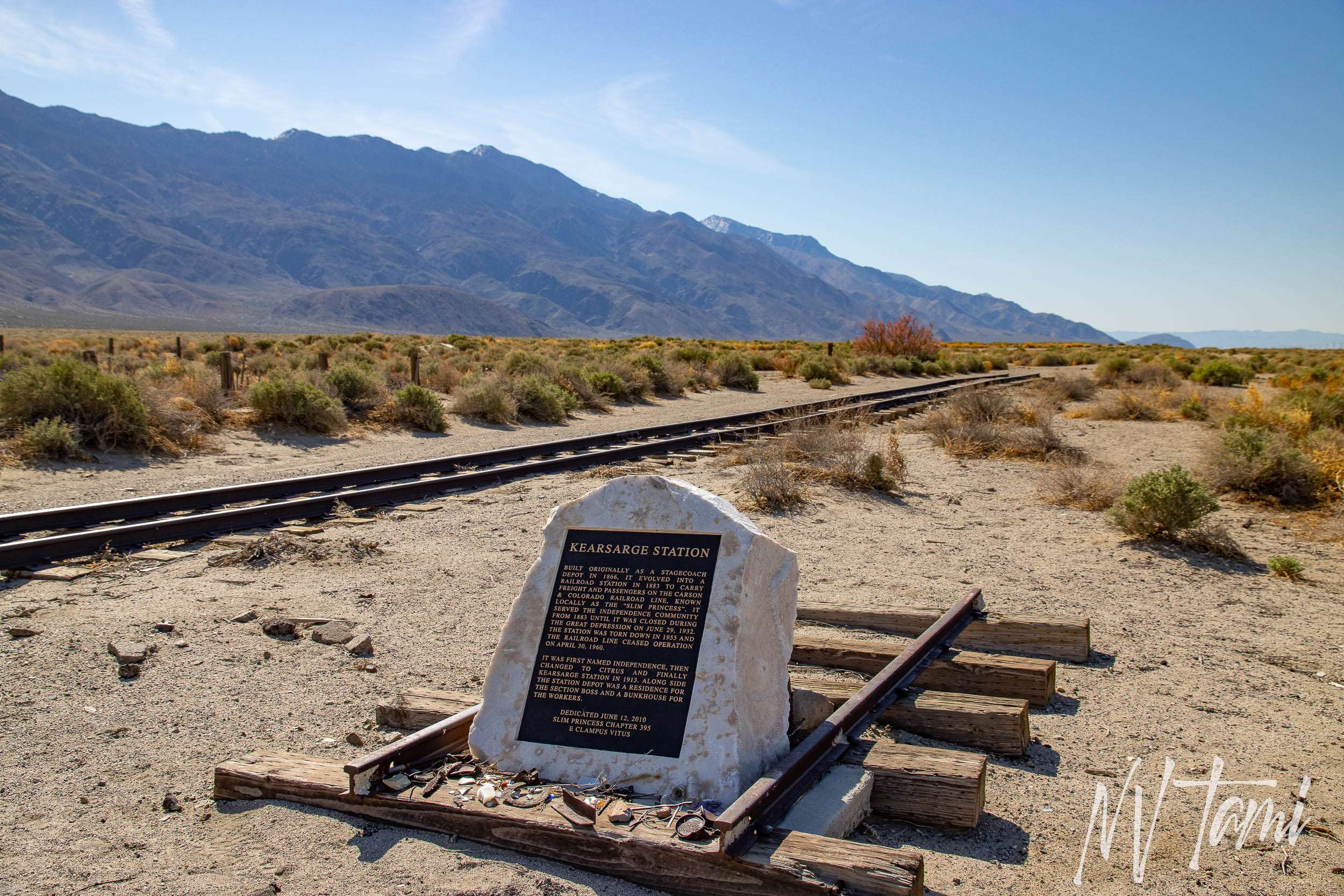
In the valley below, a stagecoach station opened in 1866. The Carson & Colorado Railway expanded its facilities in 1883 and opened Kaersage Station. Workers lived in a bunkhouse, and the boss lived in a house. The station closed in 1932 and was dismantled in 1952.

Karsarge’s name was born of the Civil War. Nearby southern sympathizers named Alabama Hills to honor the accomplishments of the Confederate warship, the CSS Alabama.

The CSS Alabama sunk off the coast of France in 1864. Kearsage was named after the Union man-o-war USS Kearsage, which sunk the Alabama. The town believed the name “evened the score.”
Lone Pine
The Pauites first inhabited Owens Valley and established trading routes with other tribes. The first non-native settler built a cabin between 1860 and 1862. Over the next few years, a settlement developed named Lone Pine after a single Jeffry pine tree growing at the mouth of the canyon. Lone Pine became a trading and supply center for gold and silver mines in the Alabama Hills. A post office opened in 1870, and the town included 80 buildings constructed from mainly adobe.
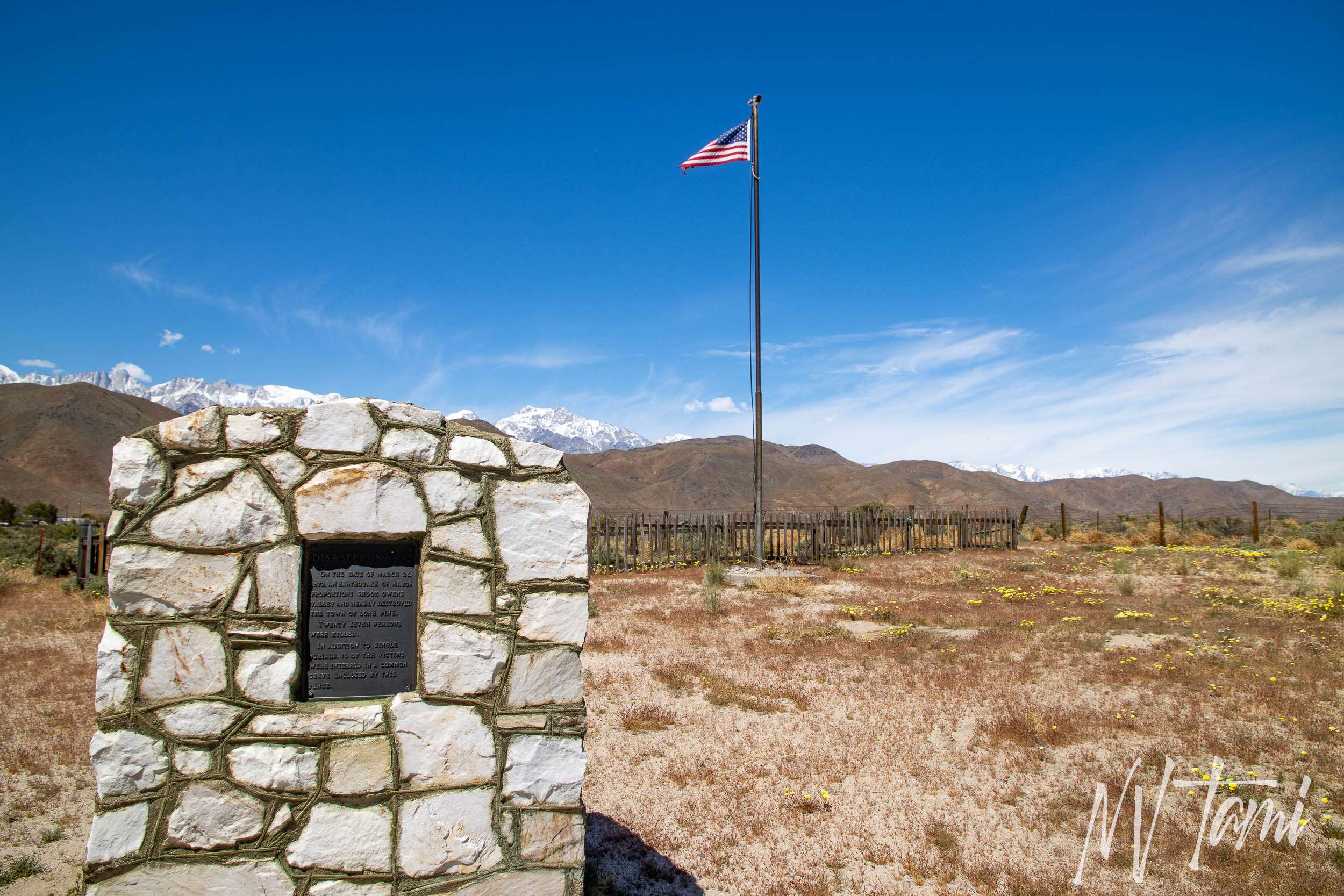
On March 26, 1872, the Lone Pine earthquake shook Owens Valley. At 7.4 to 7.9 magnitude, it was one of the largest earthquakes to hit California. Sixty buildings fell; the 20 that survived were wood construction. Twenty-six people lost their lives.
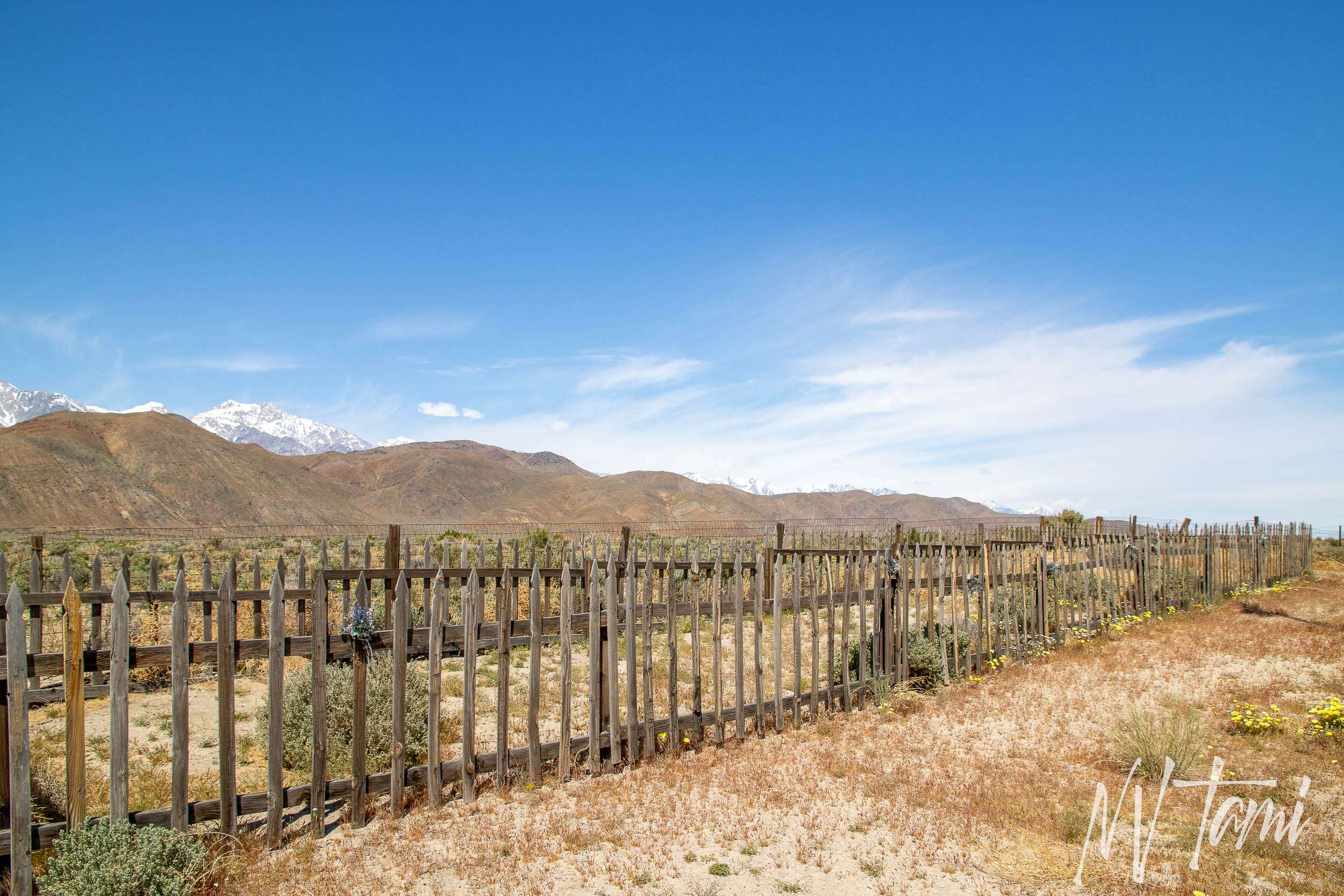
Only one adobe wall survived the quake: the general merchandise store owned by Charles and Madeline Meysan. The French couple and their children moved to Lone Pine in 1869 and opened the first store on the west side of Main Street. Their daughter Alice developed eye problems, and in March of 1872, Charles and Alice left to visit a doctor. Alice was so homesick that Charles returned to Lone Pine. Three weeks later, Alice was killed in the earthquake when the adobe wall collapsed on her. Her parents buried her in a mass grave along with 15 others.
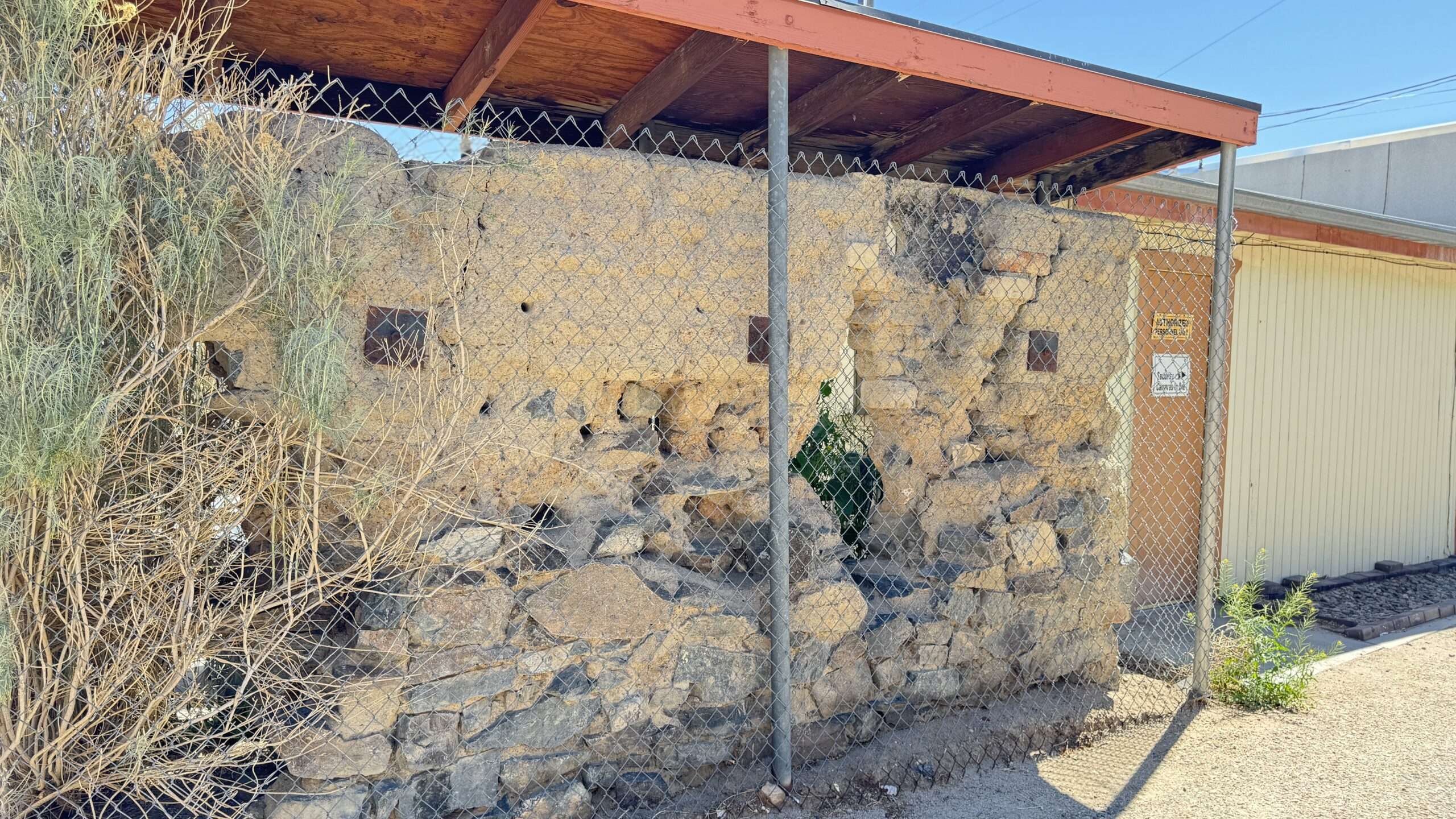
Owenyo, five miles north of Lone Pine, became a shipping center for the Carson & Colorado for the Owens Valley. Lone Pine was home to transient miners, workers on the LA Aqueduct, and film crews for more than 500 movies and television episodes.
Swansea
In 1869, Colonel Sherman Stevens built the Owens Lake Silver-Lead furnace Mill to process ore from nearby Cerro Gordo. James Brady bought the mill in 1870. He named the town for Swansea, South Wales, the world leader in gold and silver smelting.
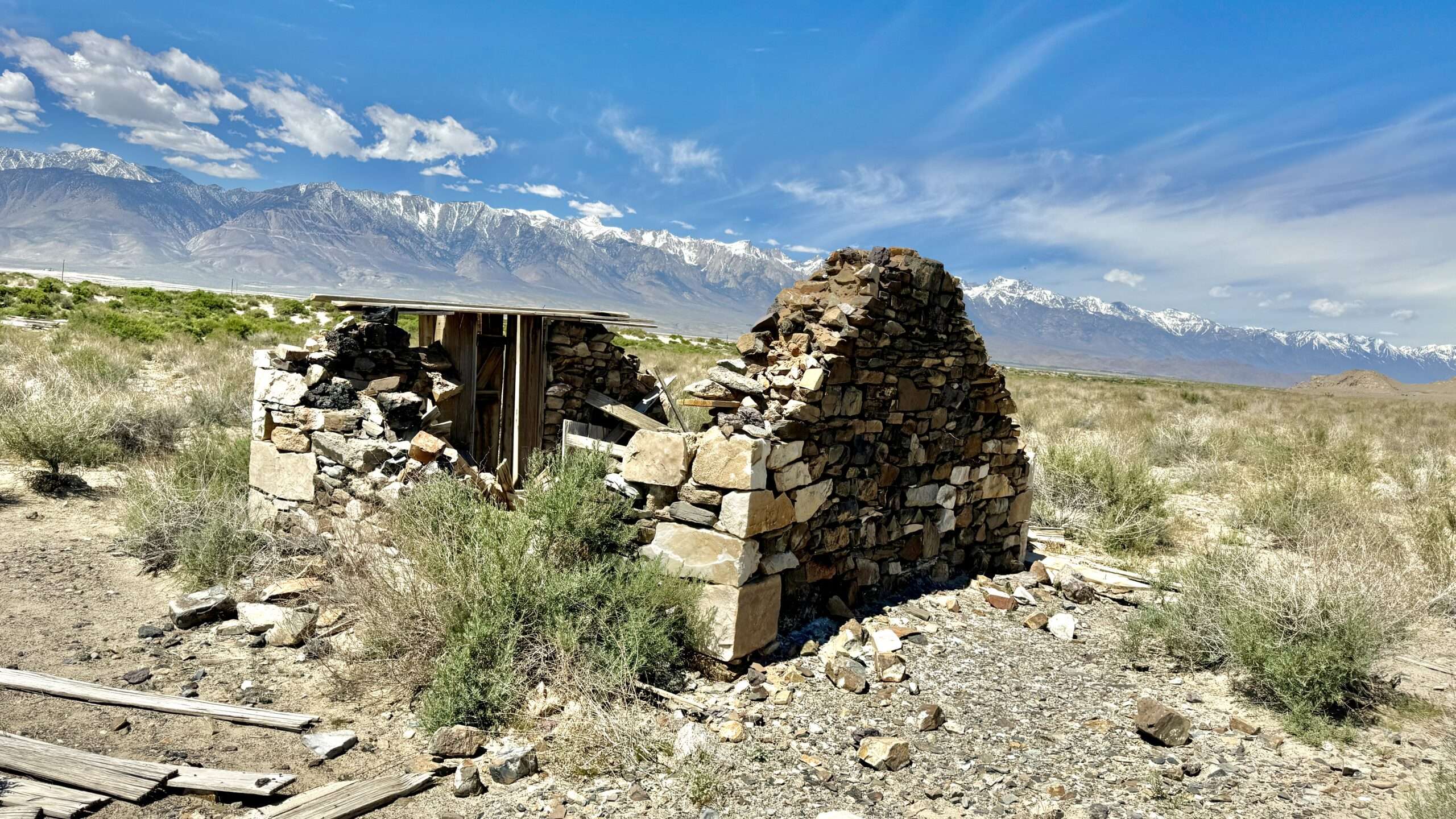
Between 1869 and 1874, Swansea became the center for smelting and transporting ore. A pier allowed ore to be transported on the steamship “Bessie Brady” across Owens Lake to Cartago, decreasing travel time from three days to three hours.

The Lone Pine earthquake in 1872 damaged the smelters at Swansea. The land shifted, raising the shoreline of Lake Owens and preventing steamships from accessing the pier. Most operations shifted a mile south to Keeler. In 1874, thunderstorms caused flash flooding, leaving Swansea under several feet of rock and sand, ending the town.
Keeler
Following the destruction of Swansea’s pier in 1872, shipping and most businesses moved one mile south to nearby Hawley, where they built a new wharf. In 1879, the Owens Lake Mining and Milling Company constructed a new mill to process ore from Cerro Gordo. Company agent Captain Keeler planned a town named after himself.

Keeler had a 300-foot pier for the steamship “Bessie Brady.” She could cross Owens Lake in 3 hours, transporting 700 ingots. In 1882, a fire destroyed the “Bessie Brady.” Fortunately, in 1883, the Carson and Colorado Railroad arrived in Keeler, allowing transportation between the mines and smelter.
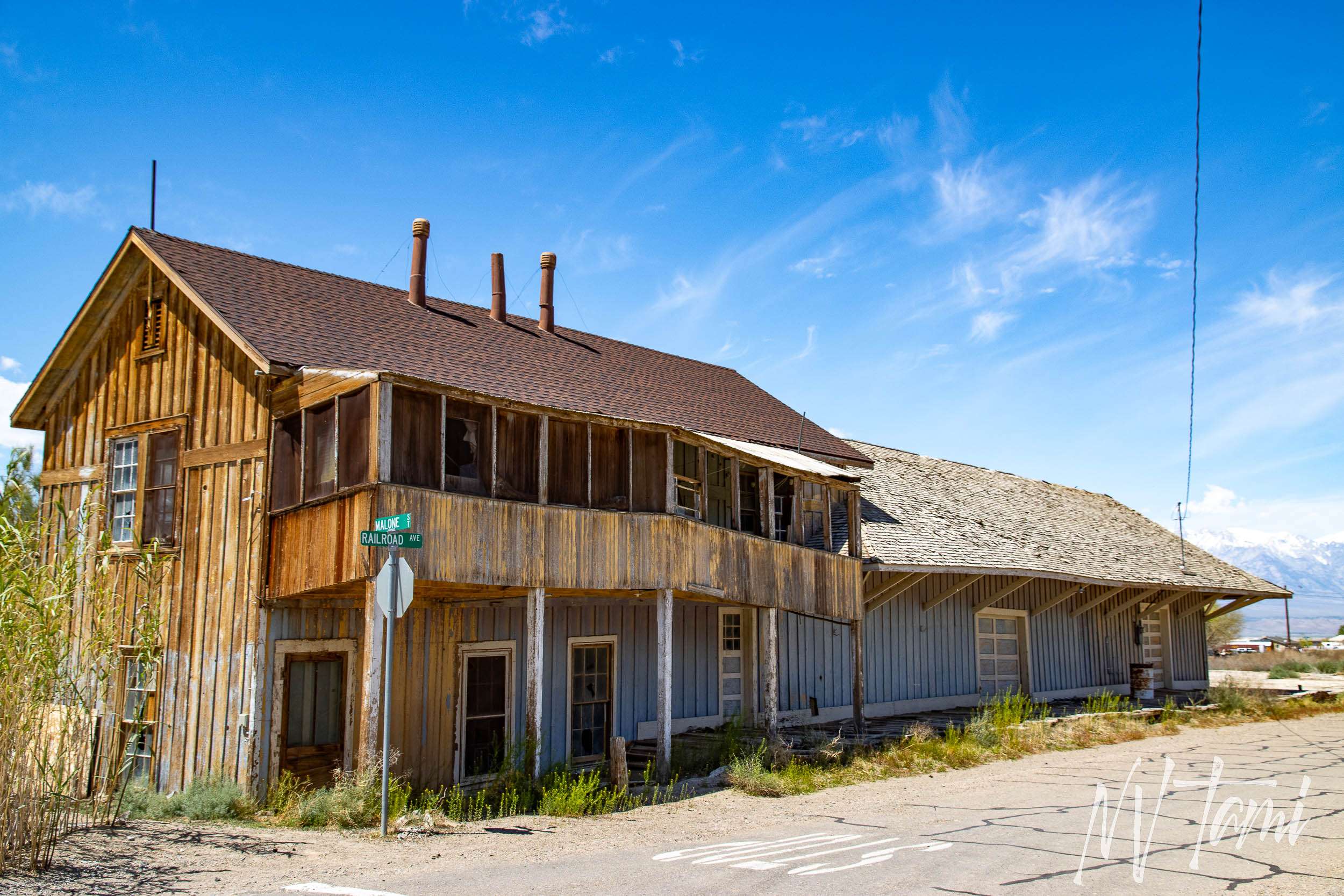
The town thrived with the silver boon in Cerro Gordo. With the demonetization of silver in the late 1800s, Keeler declined. A revival in zinc mining occurred in the early 1900s. An aerial tram transported ore from the mines to Keeler’s mills.
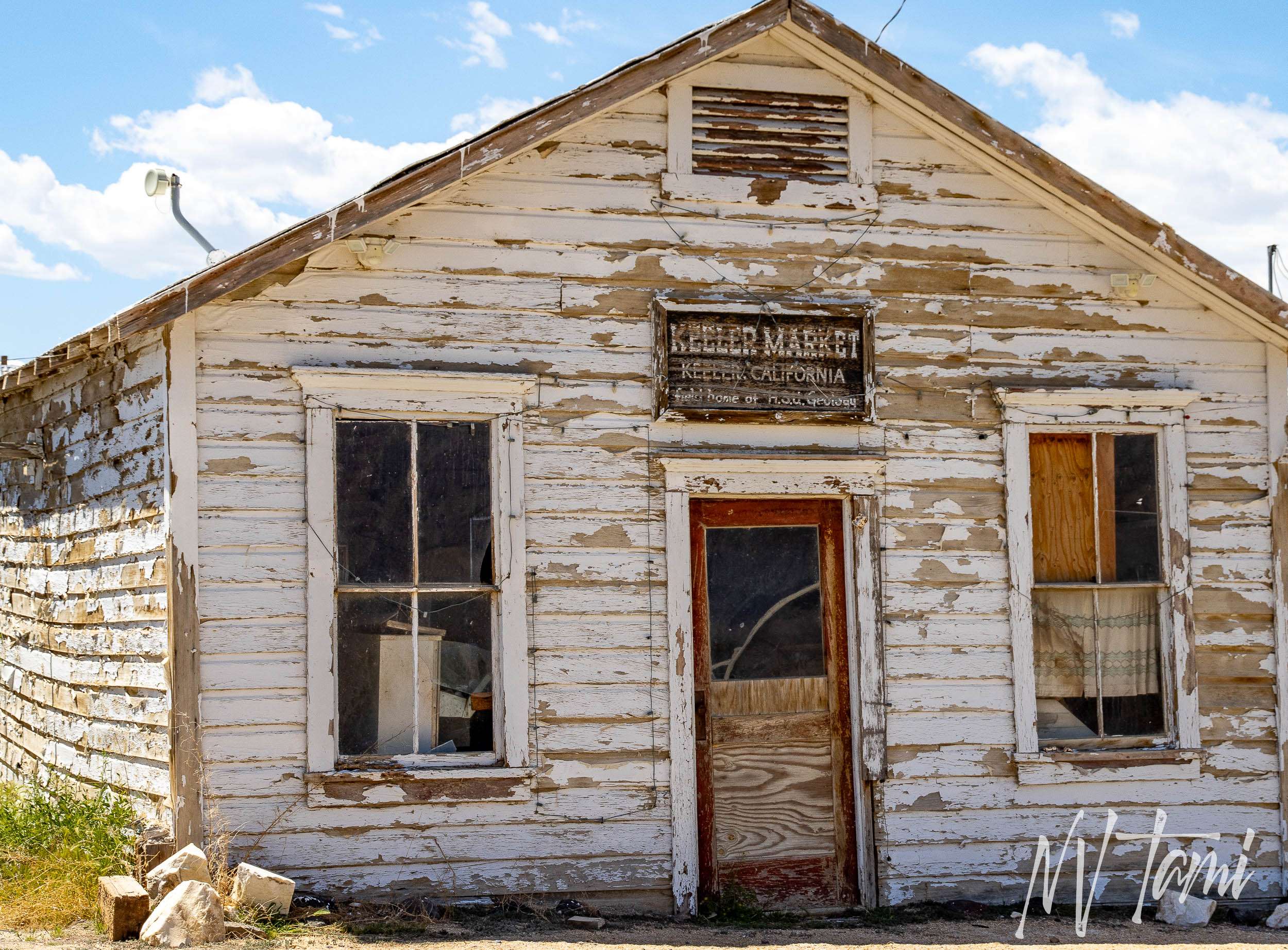
The Natural Soda Products Company began harvesting baking soda from Owens Lake to use in laundry detergent. In the early 1900s, over 7,000 people lived in Keeler. Town included hotels, boarding houses, and stores. Keeler built “The Plunge,” Owen’s Valley’s first swimming pool. Mining ended in the 1950s, and in 1960, Carson and Colorado ended service to Keeler. With the aqueduct draining Owens Lake dry, alkali dust storms drove away most residents.
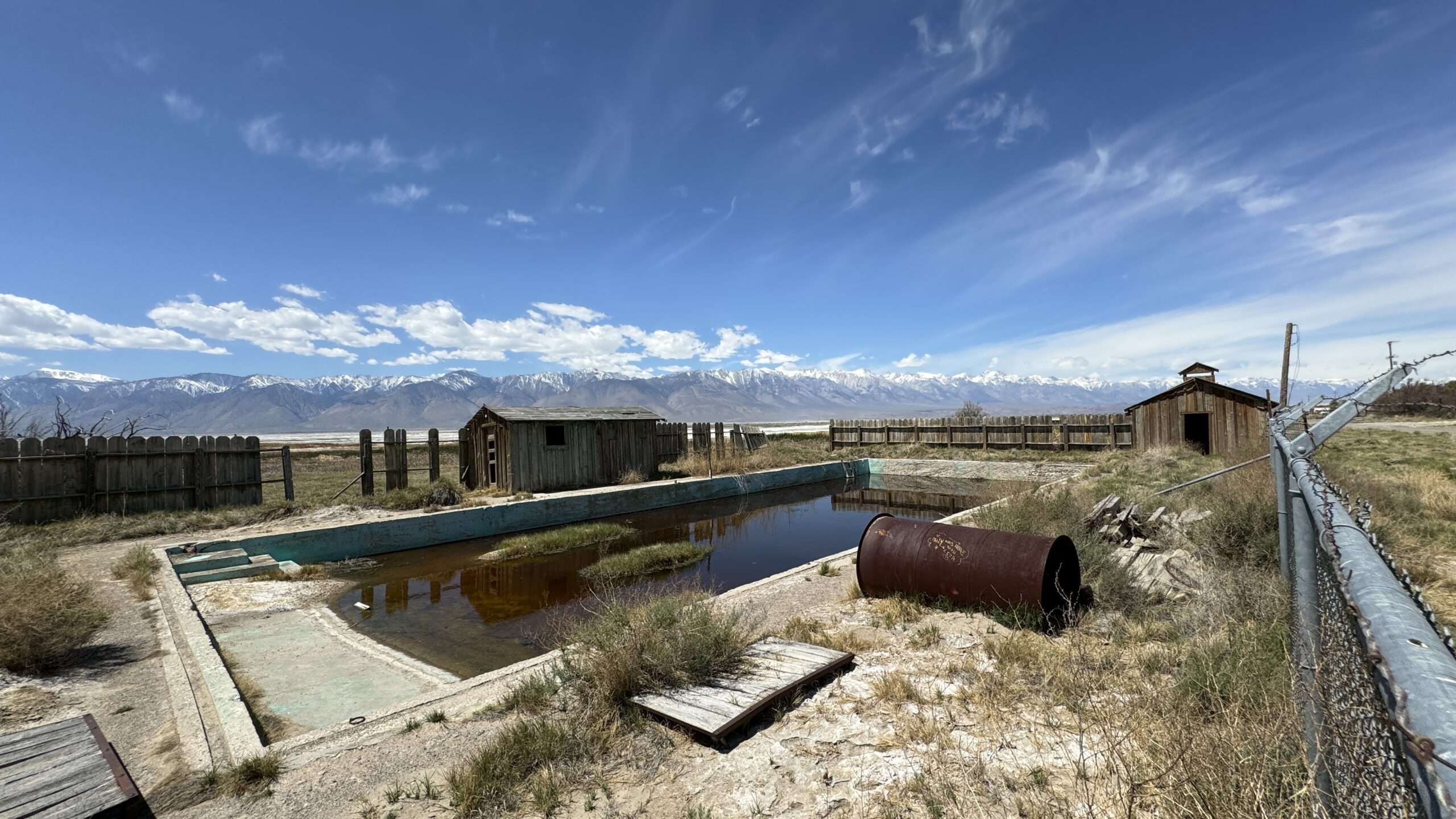
Darwin
Darwin French was a “Man of adventure,” a physician, soldier, and silver prospector. In 1860, French led a group into Death Valley to search for the mythical Gunsight Lode. A town grew west of Death Valley in 1874, and the residents named it in honor of French. The Darwin post office opened in 1875, and the town became a supply center for mines in the Coso and Argus ranges. Services included hotels, pharmacies, restaurants, a newspaper and enough saloons to quench the thirst of miners. Two smelters and twenty mines operated around Darwin.
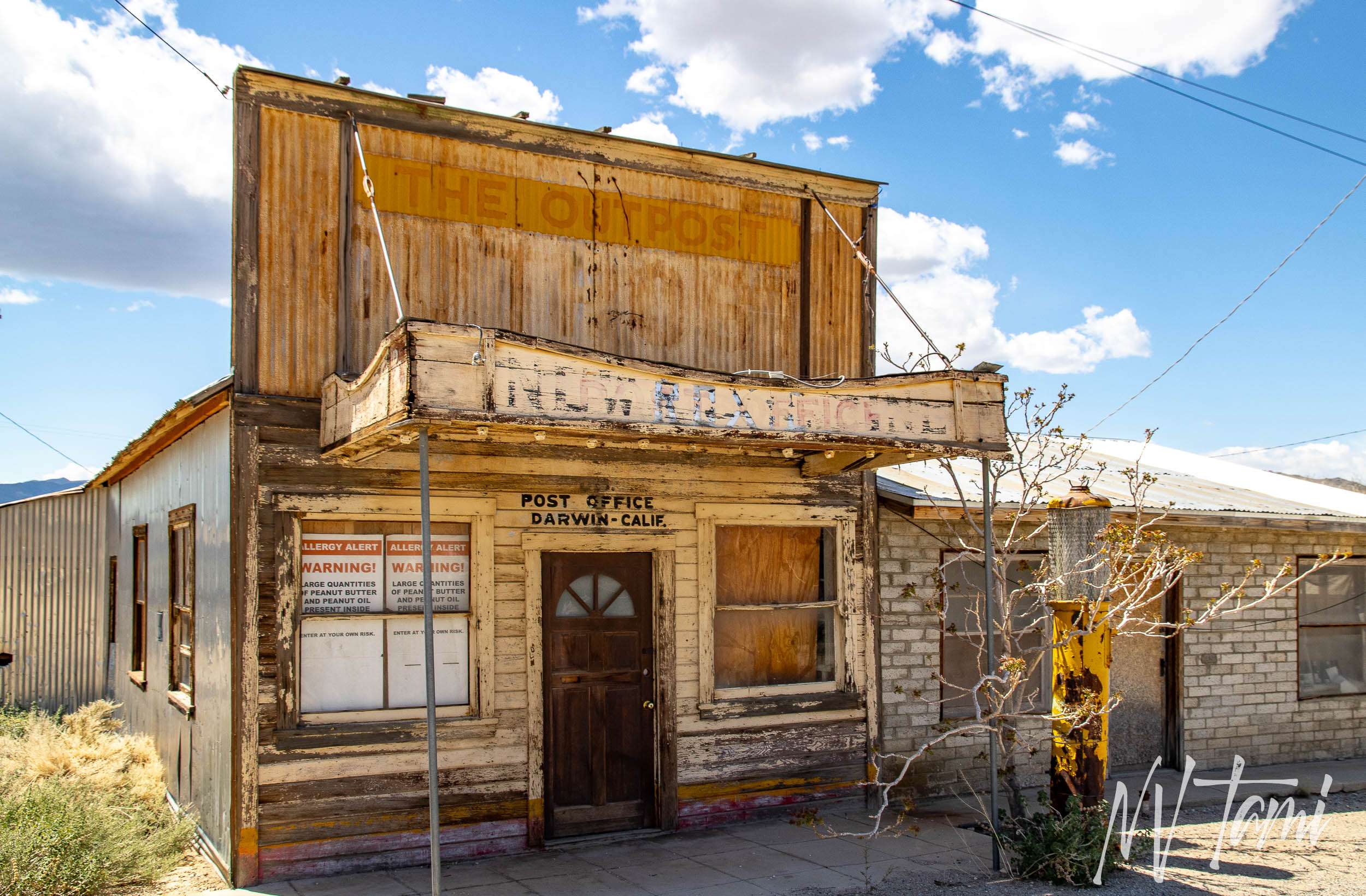
Darwin soon grew to the largest population center in Inyo County, with a population of over 1,000. Due to its isolated location from the county seat in Independence, Darwin gunfights and stage robberies occurred routinely. At its height in 1877, Darwin claimed over 3500 residents. Tragically, in 1878, smallpox ravaged the town. Soon after, mining declined, and many moved to the mining boom in Bodie. In 1879, a fire destroyed the Darwin Hotel and much of the business district.
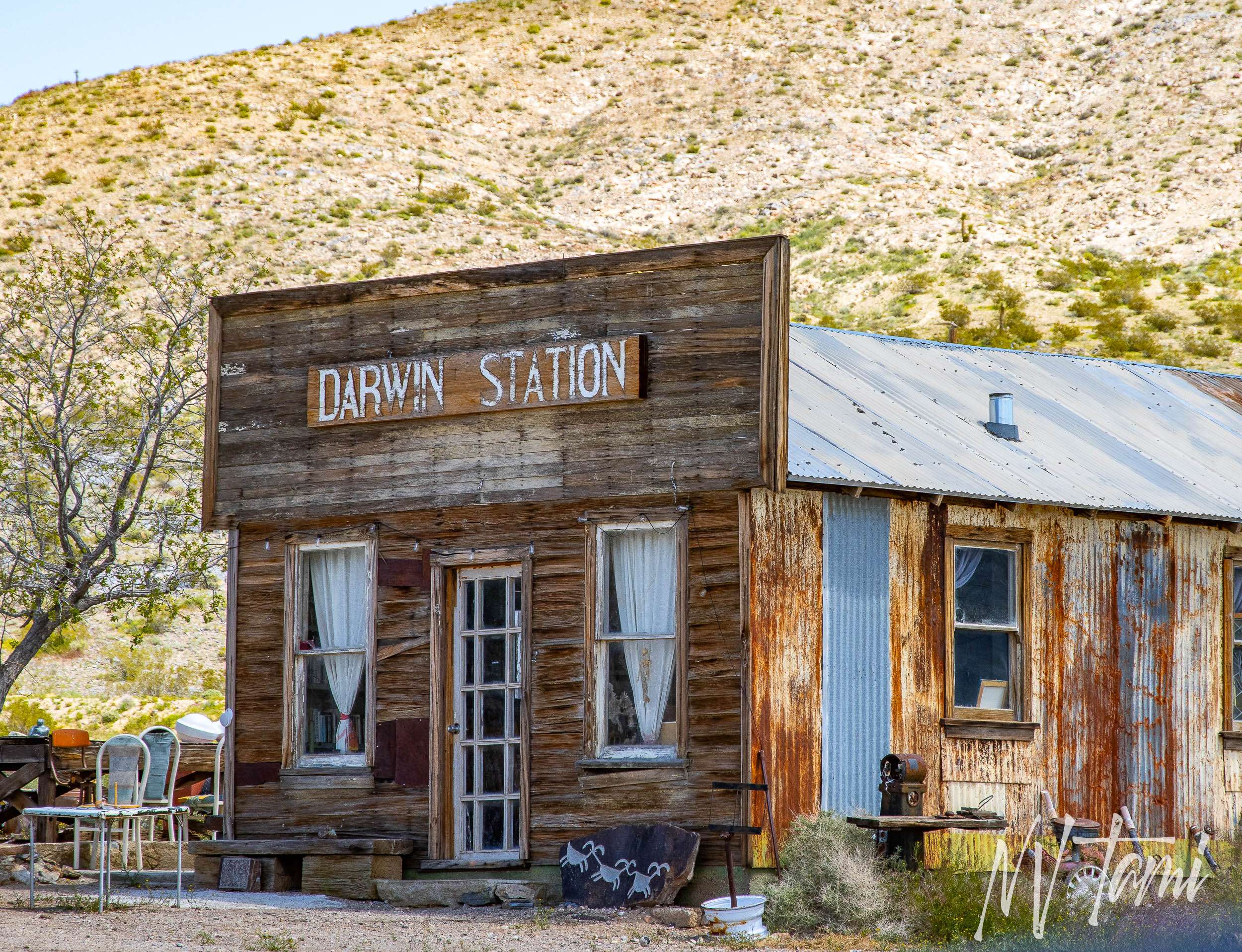
A mining revival in the early 1900s breathed new life into Darwin. Mines reworked previous tailings and discovered new deposits. They shipped ore to Salt Lake City and Keeler. Darwin rebuilt, including a new hotel. Tragically, fire again swept through Darwin in 1917 and 1918, destroying the hotel, saloons, and homes.
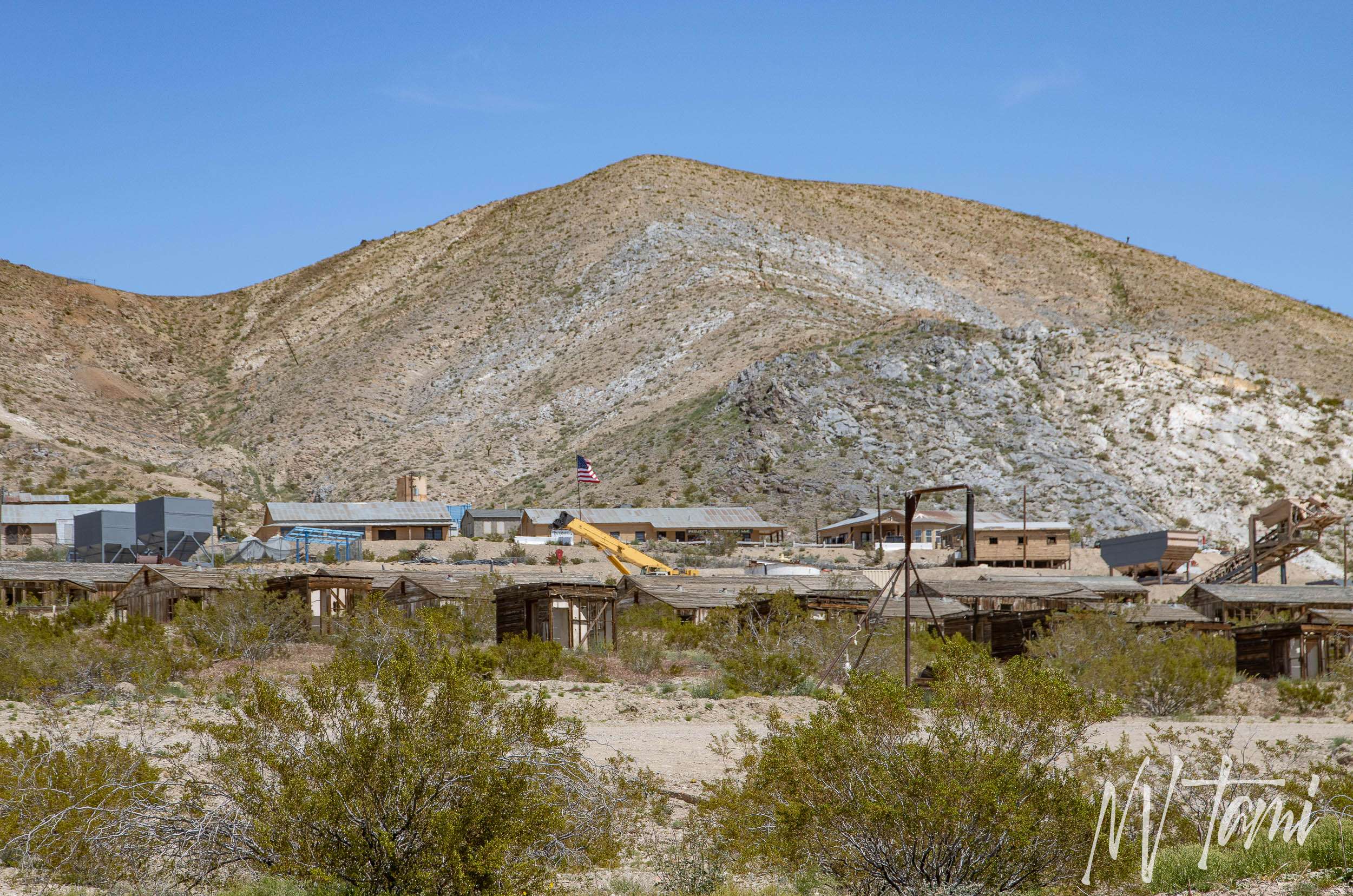
In 1926, the Eichbaum Toll Road connected Death Valley to the west, and Darwin provided services for travelers. Tourist dollars and mining seemed to assure Darwin’s future. In 1933, Death Valley became a national monument. Four years later, a new cutoff provided access to Death Valey, bypassing Darwin. A handful of residents still call Darwin home.
Follow me on social media:
Roger White says
Thank you, for the photos & the Information! I’m a History Buff!
Tami says
Welcome and always glad to meet other history buffs!
Terry says
That swimming pool is very cool. Still can hold water. Ha.
Tami says
Swimming in it would probably require a full set of vaccinations!
robert bencivenga says
What would be the most scenic route from Las Vegas to get there?
Tami says
You could either go up 95 then over through Lida. Or through Death Valley. That is probably what I would do.
Matt says
How far away are the mountains from Kearsage? The location of first and second pics look pretty safe from avalanches!
Tami says
Kearsarge Station is in the valley. The original Kearsarge was in the mountains.
Phillip A Terry says
Thank you for the tour
Tami says
Welcome, glad you enjoyed it.
Frank says
I love the Owen’s Valley. I have great friends that live in Keller for several years now. Cero Gordo is a beautiful place to visit. You can drive through it on the county road.. It’s privately owned but I believe they have rooms you can rent now.
Tami says
There is so much to see in Owens Valley. Our family has taken several vacations and each time we find something new.
Cerro Gordo is on my list for the next visit.
bob hansen says
Another great article of things I would have never known.
Thank you Tami
Tami says
Welcome, glad you enjoyed it.
Bob Kluck says
Your picture that appears to be labeled Zurich station and your picture for the Keeler station look strangely similar.!
Tami says
I’m not sure which one you mean, I don’t have any photos on the website labeled. I checked and each in the in the right section.
Zurich only has the siding remaining.
Bob Kluck says
Great Article! I had heard they were reopening the big mine at Darwin. Did you see any evidence of that?
Tami says
The mine heading into town looked active, or at least inhabited. They had a flag up and newer vehicles.
Keith says
Thank you for the pictures and history info and all the work you put into it.
Tami says
I’m glad you enjoyed the article and thanks for the wonderful compliment!